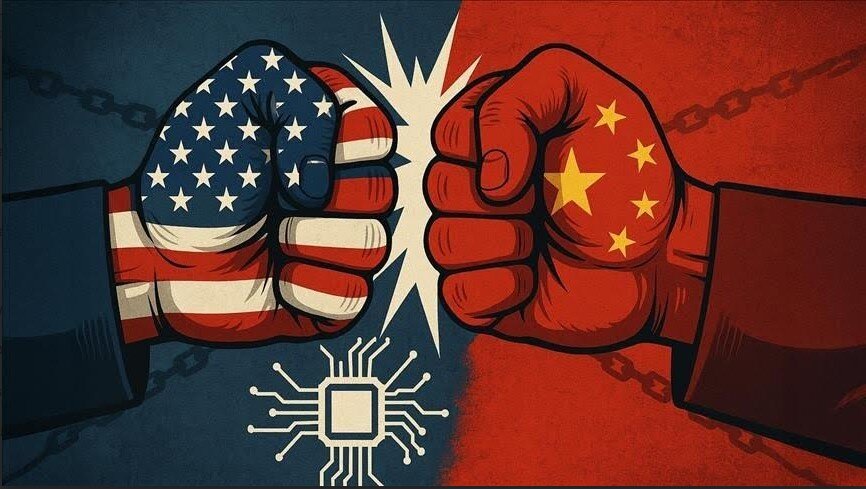Long standing China-U.S. rivalry

TEHRAN – The United States and China have one of the world’s most and complex historical relationship. Since 1949, the countries have experienced period of both tension and cooperation over issues like trade, climate change, and Taiwan.
At the recent UN Security Council meeting in New York Chinese Premier signaled desire for stable U.S. relations and urged American executives to help maintain a fragile détente between Beijing and Washington.
Today, American policy makers fear that China will leapfrog the United States in technologies that matter the most today, including robotics and artificial intelligence.
Beijing and Washington are also competing for their geopolitical global influence. An example is Beijing’s fierce opposition to American return to the abandoned Bagram Air Base in Afghanistan, about 800 kilometers from China.
Bagram Air Base’s proximity to China prompted Trump to propose that the base should again be under U.S. control. “One of the reasons we want the base is, as you know, it’s an hour away from where China makes its nuclear weapons,” Trump said last month in London.
China is the Islamic Republic’s largest trading partner and maintains close bilateral ties and mutual understanding on global issues. Reports on Iran’s surging crude imports to China is under close scrutiny by the West.
Despite the two powers’ geopolitical rivalry the end result will be determined by their technological know-how and economic well-being.
This article will focus on the two rivals’ competition in economic and technological fields.
China’s economic prowess
U.S. President Donald Trump’s administration views China’s economic rise and its growing scientific prowess as a threat to the U.S. global hegemony.
As of August 25, China became home to world’s largest foreign exchange reserves totaling U.S. $3.322 trillion reaching a 10-year high. Japan has the second largest U.S. dollar reserves, followed by the Switzerland and India.
America still remains as the world’s largest economy. When will China surpass the U.S.? Based on projections about growth rates, currencies, etc., pundits reckon that China’s big day will come soon.
The foreign reserve allows Chinese central bank to effectively hold dollar-denominated assets. The most important reason for China’s accumulation of these assets is due to the trade imbalance between the two countries, as China exports more to the U.S. than it imports.
Trump has responded by raising tariffs by an additional 50 percent beginning April 9, bringing the baseline tariff on Chinese imports to 104 percent. In retaliation Beijing increased baseline tariff on American goods to 84 percent. The U.S. then raised to 145 percent, and on April 11, China raised to 125 percent.
China’s trade surplus with America has soared in the last five years. China now runs, for example, a large trade surplus in autos with six million Chinese vehicles entering the U.S. market this year.
China’s 2024 current account surplus with the U.S. was around $430 billion.
Technology
Even though today China leads the world in total human resources it still lacks high-talent skilled manpower. In 2023, China spent more than $780 billion on research and development, compared with roughly $823 billion in U.S., according to most recent OECD data, measuring gross domestic expenditure.
China has rapidly recruited more headhunters from around the world, especially outstanding young Chinese talent that have left China for the U.S.
Trump has pushed for massive cuts in federal research budgets, ramped up government oversight of research, drastically raising the price of H1-B visas for specialized foreign workers. China sees these changes as a gift from Trump and has recruited many returning talents.
China’s launch of “K-visa” scheme this week, which analysts said would appeal to overseas Chinese and skilled workers, is meant to support its science and technology industries, a priority for President Xi Jinping amid increasing competition with the U.S.
Lu Wuyuan, protein chemist who was a tenured professor at the University of Maryland before moving to Shanghai’s prestigious Fudan University in 2020 told CNN that “Chinese universities are bending over backwards to actively take advantage of this opportunity”, adding that overseas-educated scientists are returning to China with a “robust trend, perhaps an irreversible one.”
The K-visa scheme was first announced in August and rolled out on October 1, a public holiday for the country’s national day. Unlike existing schemes, the applicants are not required to be sponsored by an employer in China. The scheme cuts the red tape for application process, facilitating return of talents and entrepreneurs in education to science and technology.
In the 1980s, the U.S. won the competition against then biggest rival Japan. Today with the current trends China is bound to be competing with the U.S. head-to-head as a leader in technology and manpower.
Finally, pundits say that fusion power generation will be the next future energy generation trend. It is free of greenhouse gas emissions but unlike fission, it’s completely safe, creates little waste and the fuel is much more plentiful than uranium.
The Chinese government has made fusion power a national priority and last month launched a state-owned China Fusion Energy Co (CFEC) with $2.1 billion in capital.
And fusion energy looks to be another way in which America is yielding global supremacy to China.
Leave a Comment